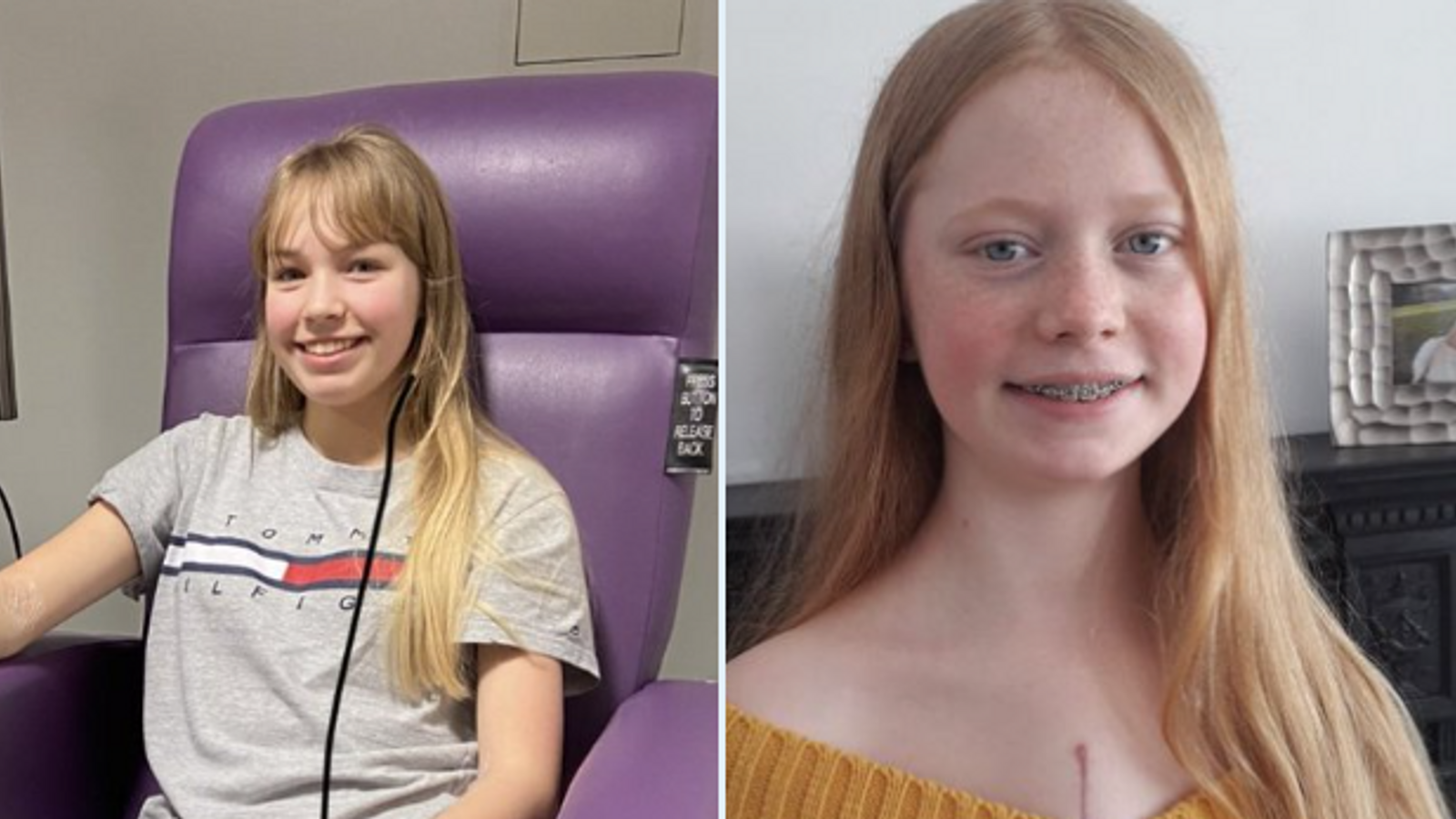In world first cases, NHS doctors have completed heart transplants in children with the organs brought back to life using a pioneering machine.
The new technique has saved the lives of six British youngsters aged from 12 to 16, and the transplants have all happened during the coronavirus pandemic.
Warning: Video at the bottom of this story shows a heart being kept alive by a machine
Donated hearts have historically been from people who are brain dead but their hearts are still beating which limits the scope for how many transplants are possible.
And on average, children have to wait two-and-a-half times longer than adults for hearts to become available.
Now Royal Papworth Hospital medics in Cambridgeshire have made hearts start to beat again after they have stopped, and the organs have been successfully transplanted into youngsters at London’s Great Ormond Street Hospital.
The hearts were brought back to life using a machine called an organ care system (OCS).
After death, the donor heart is retrieved and put on the OCS, where it is kept warm and has 1.5 litres of the donor’s blood pumped through it in a cycle, and receives nutrients.
Doctors can also speed up the heart rate by remote control if needed.
The hearts were then flown to London for transplanting.
The technology had previously been tried only in adults.
The first child whose life was saved by the heart-in-a-box machine and a stranger was Anna Hadley, now 16, from Worcester.
She had waited almost two years for her heart transplant after being diagnosed with a rare condition called restrictive cardiomyopathy.
Within 24 hours of the five-hour operation in February last year she was sitting up in bed. A fortnight later, she walked out of Great Ormond Street and she was playing hockey within weeks.
“I just feel normal again. There’s nothing I cannot do now,” she told The Sunday Times.
Another patient, 14-year-old Freya Heddington from Bristol, was also diagnosed with restrictive cardiomyopathy.
8/10 For Freya, now 14, the collaboration meant she was waiting for a heart for two months rather than two years.
She is back doing the things she loves, like horse riding.
Four more children in the UK received donor hearts in this way in 2020. All are back home and doing well. pic.twitter.com/E0PzU9QuYz
The condition pushes the lung pressures up and causes dizziness, chest pain, palpitations and tiredness. In Freya, the condition caused shortness of breath, fainting and she often felt weak.
She said: “This new procedure has prolonged my life, it’s saved my life and it’s given me new opportunities that I didn’t have beforehand.”
Speaking about her experience, Freya added: “For me, it happened a lot quicker than for most children. I’m so grateful to my donor and their family for this second chance. When I woke up from the surgery I felt like I could finally breathe again.”
'We reanimated hearts outside the human body into a box.'
Dr Marius Berman explains how surgeons have been able to make hearts beat again after they had stopped by using a 'heart in a box' machine.
Get more on this story: https://t.co/AVquteN7pD pic.twitter.com/MHULTAbe7a
“No one else in the world is currently doing this,” said Marius Berman, consultant cardiothoracic transplant surgeon at Royal Papworth.
“It’s been an incredible multi-institutional and multidisciplinary team effort to make this possible, involving everyone from the specialist nurses in organ donation and retrieval, transplant coordinators, physicians and surgeons.
“Above all, none of this would be possible without the generosity of every donor and their families.”
Please use Chrome browser for a more accessible video player
Dr John Forsythe, medical director for organ donation and transplantation at NHS Blood and Transplant, said: “This new technique will save lives both here and around the world.
“It means people can donate their hearts where it wouldn’t have been possible in the past, giving life to patients on the waiting list.”
The breakthrough is expected to allow a big expansion in the number of donor hearts available, reduce post-operation complications, speed up recoveries, increase transplant survival rates and save hundreds of lives.






















